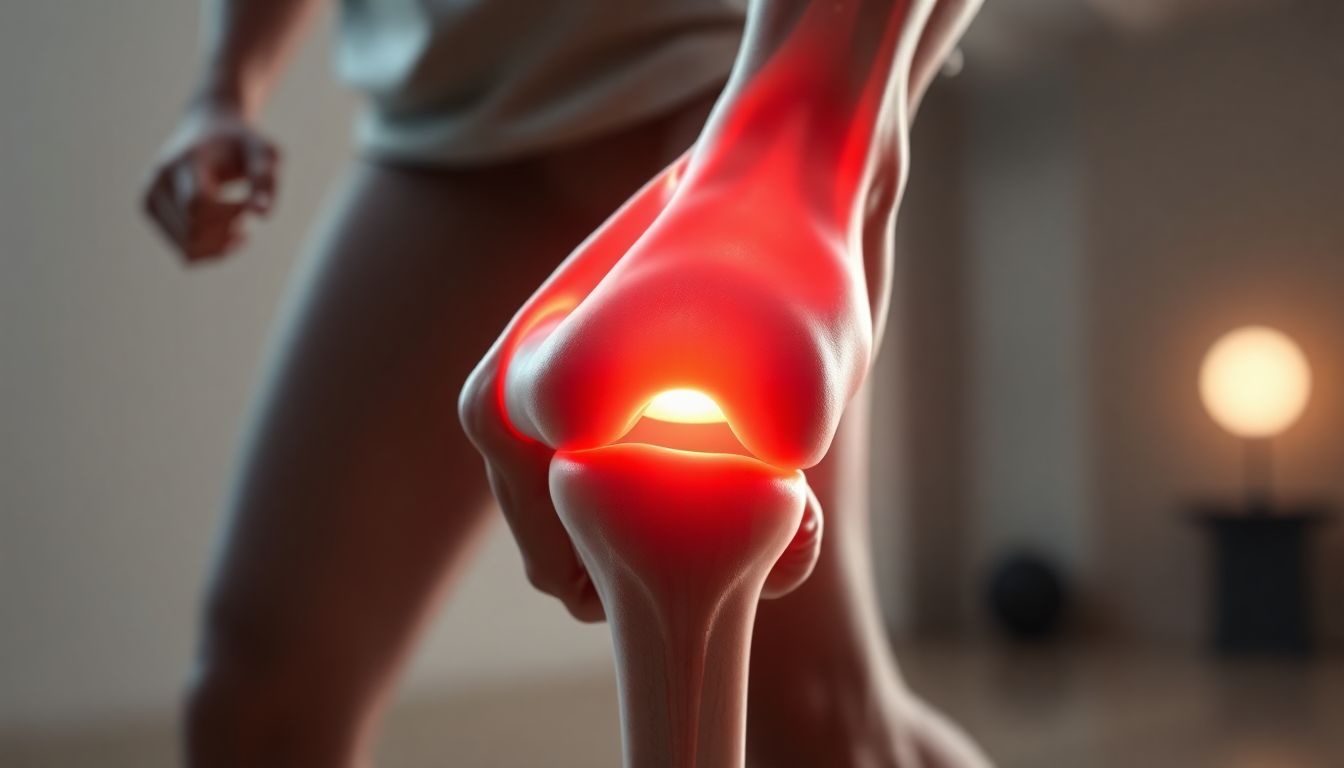
Joint pain is a widespread issue affecting millions of people. In fact, around one in four adults experience joint pain at some point in their lives. This pain can disrupt daily activities, making even simple tasks feel daunting. Understanding how to maintain joint health is vital for everyone, especially those already feeling the effects of wear and tear. This guide will help you uncover effective strategies for stronger, healthier joints.
Understanding Your Joints: Anatomy and Function
Joint Anatomy 101
Joints are where two or more bones meet. They allow for movement and stability. Here's a quick look at the basic types of joints:
- Synovial Joints: These are the most common type. They contain a fluid-filled space that enables smooth movement. Examples include knees, elbows, and shoulders.
- Fibrous Joints: These joints hold bones together with tough connective tissue. They allow very little movement, like the joints in your skull.
- Cartilaginous Joints: These joints have cartilage between the bones, allowing limited movement, such as in the spine.
Common Joint Problems
Joint issues like osteoarthritis and rheumatoid arthritis are common. They affect millions globally, with osteoarthritis alone affecting about 32.5 million adults in the U.S. Injuries, such as sprains and strains, can also lead to joint pain.
The Role of Cartilage and Lubrication
Cartilage cushions joints and protects bones. Synovial fluid lubricates joints, reducing friction. Keeping cartilage healthy and ensuring sufficient synovial fluid is crucial for pain-free movement.
Nutrition for Joint Health: Fueling Your Body's Support System
The Power of Anti-Inflammatory Foods
Eating the right foods can help reduce inflammation. Here are foods to include in your diet:
- Omega-3 Fatty Acids: Found in fatty fish like salmon, walnuts, and flaxseeds. Aim for 2 servings of fish per week.
- Fruits and Vegetables: Berry varieties, spinach, and broccoli are excellent for their antioxidants.
- Spices: Turmeric and ginger can help soothe inflammation. Try adding them to meals or teas for extra benefits.
Essential Vitamins and Minerals
Certain vitamins and minerals play key roles in keeping joints healthy:
- Vitamin D: Vital for calcium absorption. Sunlight is a great source, along with fortified foods.
- Calcium: Helps maintain bone strength. Dairy products, leafy greens, and fortified plant milks are good sources.
- Vitamin C: Important for collagen production, which supports cartilage health. Citrus fruits and bell peppers are great options.
Hydration's Impact
Drinking enough water is essential for joint lubrication. Aim for at least 8 cups daily, more if you are active.
Exercise and Movement: Strengthening and Protecting Your Joints
Low-Impact Exercises
Staying active is important but pick exercises that are easy on your joints:
- Swimming: Offers a full-body workout without stressing joints.
- Cycling: Great for building strength and endurance with low impact.
- Walking: Simple and effective for cardiovascular health.
Strength Training for Joint Stability
Building muscles around joints provides better support. Consider these exercises:
- Bodyweight Squats: Strengthen legs and improve knee support.
- Resistance Band Exercises: Focus on arms and legs for joint support.
- Leg Raises: Target hip flexors and hamstrings without heavy weights.
Stretching and Flexibility
Incorporating flexibility exercises helps maintain a healthy range of motion. A simple stretching routine might include:
- Neck stretches
- Arm circles
- Hamstring stretches
- Quadriceps stretches
Lifestyle Factors and Joint Health: Beyond Diet and Exercise
Weight Management
Carrying extra weight puts stress on your joints, especially weight-bearing ones like hips and knees. Losing just 5-10% of your body weight can significantly reduce joint pain.
Sleep and Recovery
Getting enough sleep is crucial for recovery and joint health. Aim for 7-9 hours per night to allow your body to repair itself.
Stress Management
Stress can lead to inflammation, worsening joint pain. Mindfulness, yoga, or simple breathing exercises can help reduce stress and improve overall well-being.
Seeking Professional Help: When to Consult a Doctor
Recognizing Warning Signs
Look out for these signs that indicate a serious joint problem:
- Persistent joint pain that doesn't improve with rest
- Swelling or stiffness that lasts more than a few days
- Loss of mobility or flexibility
Treatment Options
If you experience severe joint issues, several treatment options are available:
- Medications: Over-the-counter pain relief like ibuprofen or stronger prescribed drugs.
- Physical Therapy: Customized exercises to strengthen muscles around joints.
- Surgery: Considered in severe cases when other treatments fail.
Finding the Right Specialist
If you're worried about your joint health, consult a qualified healthcare professional. Look for rheumatologists or orthopedic doctors specializing in joint health.
Conclusion: Your Path to Stronger, Healthier Joints
In summary, joint health relies on understanding anatomy, proper nutrition, regular exercise, and a healthy lifestyle. Emphasizing strength training, nutrition, and managing stress can significantly improve joint function. Taking proactive steps today sets the foundation for healthier joints tomorrow. Make your joint health a priority, and you will notice the difference!
